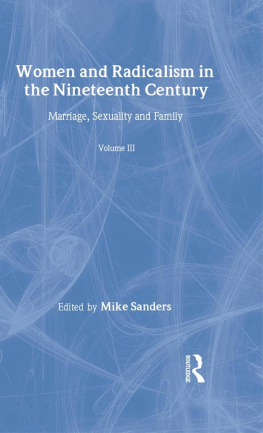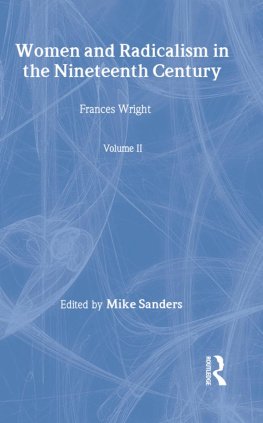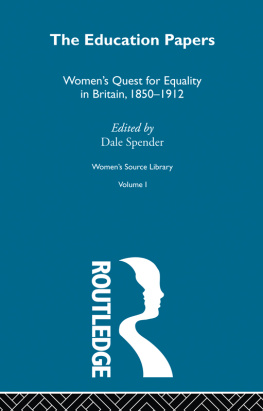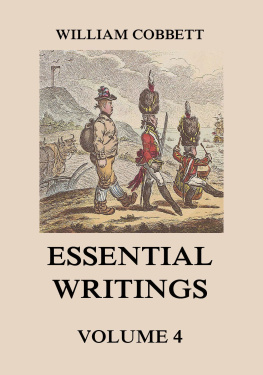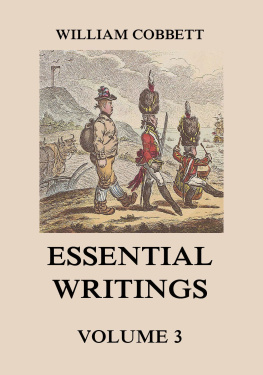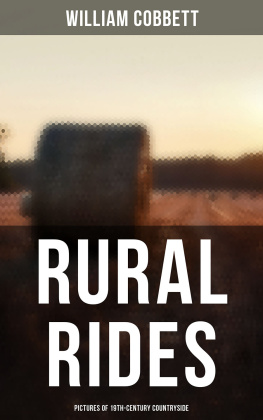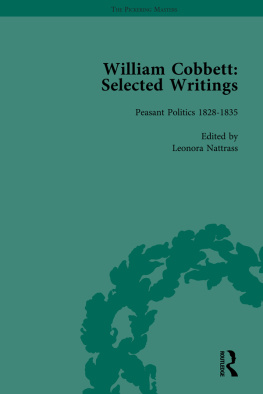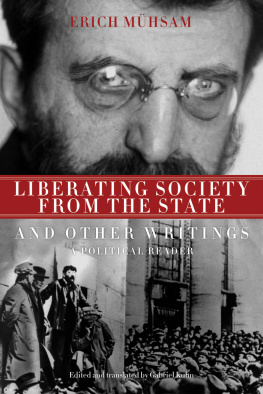This edition published 2001
by Routledge
2 Park Square, Milton Park, Abingdon, Oxon OX14 4RN
Simultaneously published in the USA and Canada
by Routledge
605 Third Avenue, New York, NY 10017
Routledge is an imprint of the Taylor & Francis Group, an informa business
Introduction and selection 2001 Mike Sanders.
Typeset in 10/12pt Times by Graphicraft Limited, Hong Kong
All rights reserved. No part of this book may be reprinted or reproduced or utilised in any form or by any electronic, mechanical, or other means, now known or hereafter invented, including photocopying and recording, or in any information storage or retrieval system, without permission in writing from the publishers.
Notice:
Product or corporate names may be trademarks or registered trademarks, and are used only for identification and explanation without intent to infringe.
British Library Cataloguing in Publication Data
A catalogue record for this book is available from the British Library
Library of Congress Cataloging in Publication Data
Women and radicalism in the nineteenth century / edited and with an introduction by Mike Sanders.
p. cm.
Includes bibliographical references
Contents: Specific controversies Frances Wright Marriage, sexuality, and family Women and industrialism.
ISBN 0-415-20525-5 (set) ISBN 0-415-20526-3 (vol. 1) ISBN 0-415-20527-1 (vol. 2) ISBN 0-415-20528-X (vol. 3)
ISBN 0-415-20529-8 (vol. 4)
1. Women Great Britain History 19th century. 2. Womens rights Great Britain History 19th century. 3. Women Great Britain Social conditions. 4. Radicalism Great Britain History 19th century. 5. Feminism Great Britain History 19th century. 6. Sexual ethics Great Britain History 19th century. I. Sanders, Mike, 1966
HQ1596 W65 2001
305.4094109034 dc21
00-064080
ISBN 13: 978-0-415-20525-2 (set)
ISBN 13: 978-0-415-20528-3 (hbk) (volume 3)
The publishers have made every effort to contact authors/copyright holders of works reprinted in Women and Radicalism in the Nineteenth Century. This has not been possible in every case, however, and we would welcome correspondence from those individuals/companies whom we have been unable to trace.
References within each chapter are as they appeared in the original complete work.
MARRIAGE, SEXUALITY AND FAMILY
William Cobbetts Advice to Young Men, and (incidentally) to Young Women, in the Middle and Higher Ranks of Life was originally published in 1830 although this anthology reprints the Simpkin, Marshall and Company edition from 1856. It provides an interesting example of older radical writing on the question of marriage. Although its title suggests an intended higher-class audience, its major concern is with establishing rules of right conduct which might be practised by respectable members of all classes.1
At first sight Cobbett appears to be a straightforward exponent of what might be termed the traditional-patriarchal model of marriage. He believes that the husband should be the head of the household, describing a wife-dominated husband as the most contemptible of Gods creatures [72]. He is no less certain that a wifes proper place is in the home attending to her domestic duties. His list of eight qualities to be desired in a wife chastity, sobriety, industry, frugality, cleanliness, knowledge of domestic affairs, good temper and beauty combine to provide a portrait of the angel in the house.
Yet this is only part of Cobbetts analysis. A closer inspection of his text reveals a rather more complex set of attitudes. Am I recommending tyranny? Am I recommending disregard of the wifes opinions and wishes?, he asks rhetorically, before answering in the negative [73]. Whilst Cobbett is clear that the final authority in all major decisions must be the husband, he is equally clear that wives ought to be heard, and patiently heard reasoned with, and, if possible convinced [75]. As both vocabulary and argument make clear, Cobbett rejects the notion of husband as absolute monarch and domestic tyrant; rather he imagines marriage as a compact between unequal parties wherein power must initially seek to legitimise its actions by gaining the consent of the governed.
Moreover, there is a sense in which Cobbetts insistence on ultimate masculine authority reflects his anxieties about its frailties in the real world. As in the real world, Cobbett argues, women combine to mitigate the effects of, and even to encroach upon, patriarchal power. In particular, Cobbett identifies the crucial role played by informal, local female networks in this respect.
There are, in almost every considerable neighbourhood, a little squadron of she-commanders, generally the youngish wives of old or weak-minded men These are the tutoresses of the young wives of the vicinage; they not only school the wives, but scold the husbands; they teach the former how to encroach, and the latter how to yield: [73]
Although Cobbett enjoins husbands to resist such encroachments, he accepts that female combination is both natural and, to a certain extent, laudable, given the vast power that the law gives [men] over [women] [72].
In Cobbetts ideal, women are restricted to the domestic sphere. However, this is neither an inconsequential nor a trivial field of occupation. He argues that the effective management and/or performance of domestic tasks is an essential component of marital happiness and familial success. In addition, Cobbett acknowledges the economic value of female domestic labour and argues from this that wives thereby acquire rights over property which the law recognises as belonging exclusively to the husband. Cobbett emphasises the skilled nature of household management and is highly critical of the contemporary middle-class fashion of valorising women solely for aesthetic accomplishments such as music and drawing. In this respect Cobbett anticipates some of the frustrations felt by middle-class wives in the mid-Victorian period. In addition, through his insistence on the necessity of cultivating domestic skill, he highlights a strategy by means of which, as Joanna Bourke has shown, women consolidated their domestic authority.2
Nor should we lose sight of the fact that for Cobbett the husbands proper place (outside of working hours) is also in the home. Indeed, Cobbett identifies a home-centred existence as the key to domestic happiness and is extremely critical (on economic, moral, and emotional grounds) of husbands who spend their leisure hours apart from their wives. He offers this piece of advice to young husbands never go, in one single instance, unnecessarily from [your] own fire-side [66]. Cobbett also expects husbands to contribute, where appropriate, to household tasks, citing his own willingness to light fires, fetch and heat water, collect wood and, most importantly, to assist in the provision of child-care. Above all, Cobbett advises husbands to remain attentive and considerate to their wives feelings. Once more, he offers a personal example when his wife was particularly fearful of storms I used to quit my business and hasten to her, the moment I perceived a thunderstorm approaching [62]. Time, consideration and affection rather than baubles and trinkets are, says Cobbett, what a husband owes to a wife [64].

